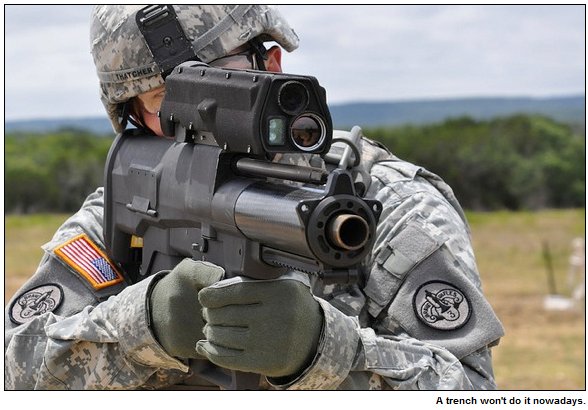Five years back, there were interesting reports about a prototype weapon that seemed to have an inside edge for getting into the hands of front-line troops in Afghanistan for specific bunker-busting and similar missions. Then it went silent. Recently, Strategy Page says it may be back in the running:

Two years after having its budget sharply cut in 2013 the U.S. Army XM25 grenade launcher is back on track and is now expected to enter service by 2017. It’s been a long road from concept to acceptance and mass production. The army began working on this type of weapon back in the 1990s as the OICW (Objective Individual Combat Weapon) and that mutated into the XM25 (the “X” in XM25 designates a system that is still in development). Since then the similar South Korean K11 and Chinese ZH05 have appeared. The XM25 is the only one of three to have been tested extensively in combat but because of a misfire during a demonstration, budget cuts and some troops finding there were not really that many situations calling for the XM25, the system was thought to be cancelled (development funding was eliminated) in 2013. But the army managed to keep the project on life support. That was mainly because a lot of troops who got to use it in combat liked it a lot and even gave it a nickname; “punisher.”
The initial spectacular success and popularity of the XM25 grenade launchers in Afghanistan led the army to request that the weapon enter regular service as the M25 in 2014. But Congress, looking for ways to reduce military spending in 2013 cut all money for the M25. The army never gave up and managed to scrounge enough cash to build 1,100 of them. Currently the XM25 cost $35,000 each with the 25mm ammo going for $55 per round. Initially SOCOM (Special Operations Command) had some XM25s and some enthusiastic users but in 2013, with few American troops in combat there is not a lot of demand for a weapon like this. The resumption of counter-terrorism efforts in the Middle East and Afghanistan changed that led to more support for reviving the project.
When the first evaluation models of the XM25 arrived in Afghanistan in 2011 the weapon soon became much sought after by infantry troops. There were never more than a few dozen XM25s in Afghanistan and limited supplies of ammunition. Despite that the weapon quickly developed a formidable reputation. The Special Forces had priority on the weapon because it is very useful for special operations missions. The army planned to buy enough so that they could issue one per infantry squad. There are 27 squads in an infantry battalion.



